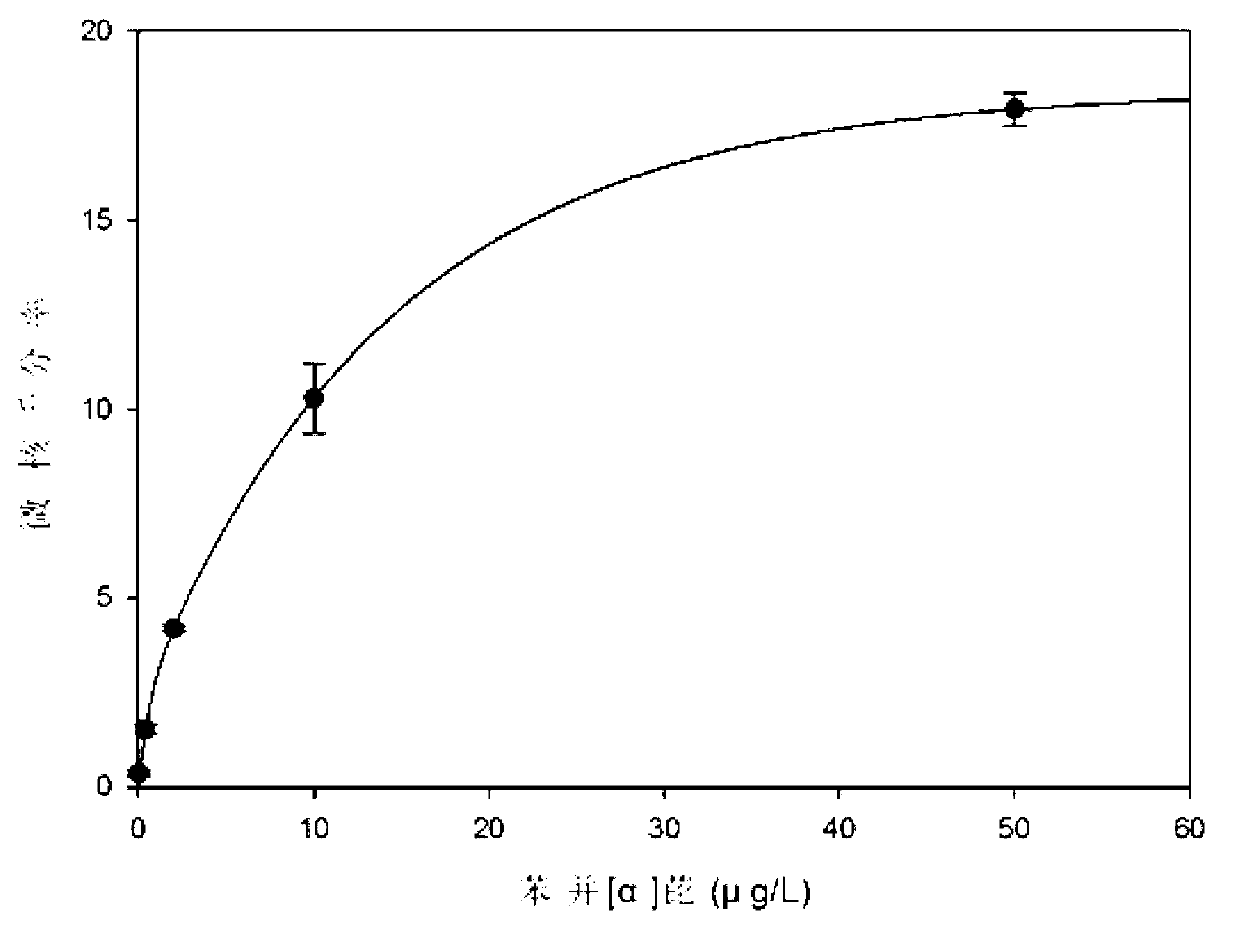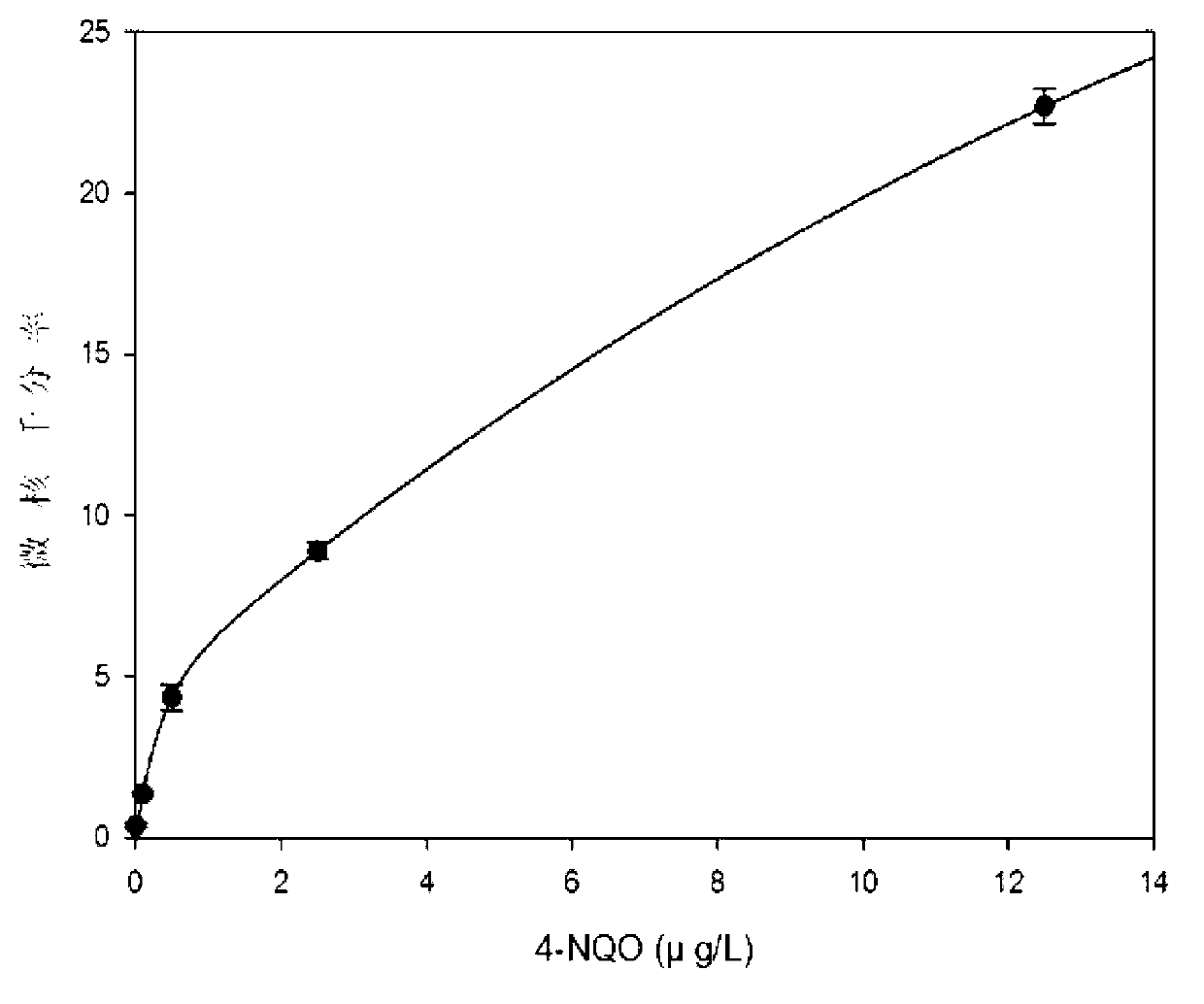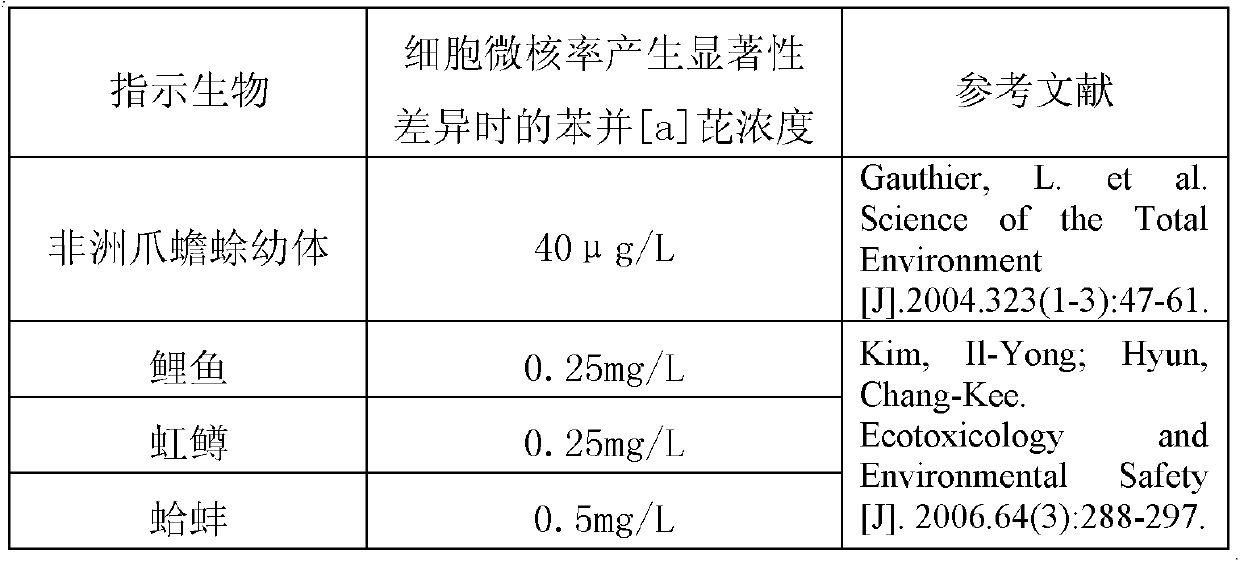Method for detecting genetic toxicity of organic pollutants in water
A technology for organic pollutants and genotoxicity, which is applied in biochemical equipment and methods, and the determination/inspection of microorganisms. Effect
- Summary
- Abstract
- Description
- Claims
- Application Information
AI Technical Summary
Problems solved by technology
Method used
Image
Examples
Embodiment 1
[0039] Embodiment 1, the detection of dimethyl sulfoxide genotoxicity
[0040] (1) Detection method and steps
[0041] (1) Domestication of rare goner crucian carp: domesticate the same batch of rare goner carp with similar body length and weight for 14 days, during which there is no natural dead fish phenomenon, and the micronucleus rate in peripheral blood reaches about 0.1‰, which can be used for experiments;
[0042] (2) The pre-test selects the appropriate concentration range of dimethyl sulfoxide for treatment, and there is no dead fish at the highest exposure concentration to be adopted;
[0043] (3) Preparation of exposure treatment solution: Dissolve dimethyl sulfoxide in activated carbon to treat tap water, and prepare an aqueous solution with a volume fraction of 0.03%, which is the prepared exposure treatment solution;
[0044] (4) Exposure treatment: a blank control without adding dimethyl sulfoxide was set; the experimental exposure group randomly selected 5 rar...
Embodiment 2
[0047] Embodiment 2, the detection of benzo [a] pyrene genotoxicity
[0048] (1) Detection method and steps
[0049] (1) Domestication of rare goner crucian carp: domesticate the same batch of rare goner carp with similar body length and weight for 14 days, during which there is no natural dead fish phenomenon, and the micronucleus rate in peripheral blood reaches about 0.1‰, which can be used for experiments;
[0050] (2) Select the appropriate concentration range for the pre-test; no dead fish were observed at the highest exposure concentration to be used, indicating that it can be used in the subsequent micronucleus exposure test.
[0051] (3) Preparation of exposure treatment solution: Dissolve benzo[a]pyrene in dimethyl sulfoxide, and prepare concentrations of 0mg / L, 4 / 3mg / L, 20 / 3mg / L, 100 / 3mg / L L, 500 / 3mg / L mother liquor, then take the same volume of mother liquor and dissolve them in tap water filtered by activated carbon, and prepare benzo[a]pyrene concentrations of 0...
Embodiment 3
[0064] The detection of the genotoxicity of embodiment 3, 4-nitroquinoline-1-oxide (4-NQO)
[0065] (1) Detection method and steps
[0066] (1) Domestication of rare goner crucian carp: domesticate the same batch of rare goner carp with similar body length and weight for 14 days, during which there is no natural dead fish phenomenon, and the micronucleus rate in peripheral blood reaches about 0.1‰, which can be used for experiments;
[0067] (2) The appropriate concentration range was selected for the pre-test; no dead fish were observed in the exposure treatment with the highest exposure concentration proposed, indicating that it can be used in subsequent micronucleus exposure tests;
[0068] (3) Preparation of exposure treatment solution: 4-nitroquinoline-1-oxide (4-NQO) was dissolved in dimethyl sulfoxide, and the concentrations were prepared to be 0mg / L, 1 / 3mg / L, 5 / 3mg / L, 25 / 3mg / L, 125 / 3mg / L mother liquor, and then take the same volume of mother liquor and dissolve them i...
PUM
 Login to View More
Login to View More Abstract
Description
Claims
Application Information
 Login to View More
Login to View More - R&D
- Intellectual Property
- Life Sciences
- Materials
- Tech Scout
- Unparalleled Data Quality
- Higher Quality Content
- 60% Fewer Hallucinations
Browse by: Latest US Patents, China's latest patents, Technical Efficacy Thesaurus, Application Domain, Technology Topic, Popular Technical Reports.
© 2025 PatSnap. All rights reserved.Legal|Privacy policy|Modern Slavery Act Transparency Statement|Sitemap|About US| Contact US: help@patsnap.com



